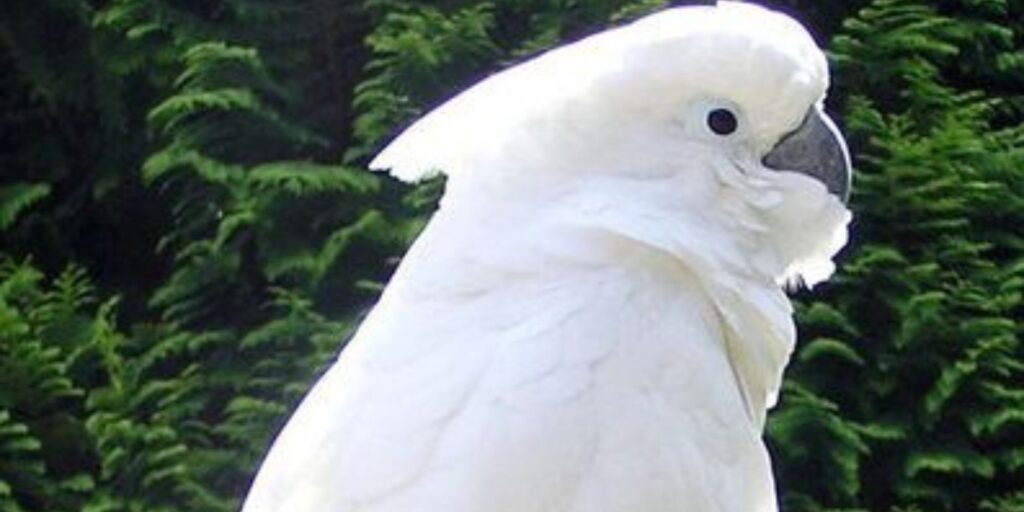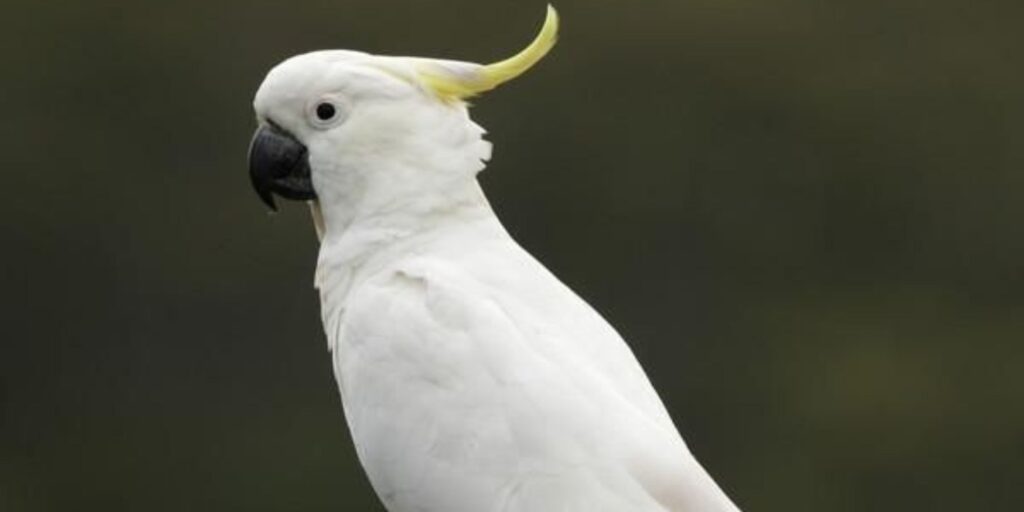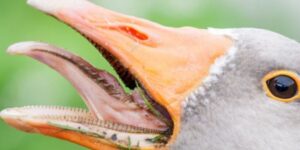Introduction
White parrot, with their striking white plumage and lively personalities, captivate the attention of bird enthusiasts worldwide. These birds stand out not only for their beauty but also for their remarkable intelligence and social behaviors. From their ability to mimic sounds to their strong social bonds, white parrots display a unique set of traits that make them both fascinating and beloved. This article dives into the world of white parrots, exploring their physical features, habitats, diets, and conservation efforts. Through this exploration, we will uncover what makes these birds so exceptional.
White Parrot: A Symbol of Beauty and Intelligence

White parrots are among the most fascinating and visually striking birds in the animal kingdom. Their pristine plumage, intelligent behavior, and strong social bonds have made them one of the most admired species in both the wild and captivity. This article explores everything from their physical characteristics and behavior to their habitat, diet, and conservation status. By the end, you will gain a deeper understanding of the role white parrots play in nature and culture.
Physical Characteristics of White Parrot
White parrots possess distinct features that make them stand out in the bird world. Their bright feathers, which can range from pure white to shades of off-white with pink or yellow tints, create a striking contrast against their vibrant surroundings. Let’s dive into the primary physical characteristics that define these birds.
Plumage and Crest
The defining feature of white parrots is their stunning white plumage, which serves as both a defense mechanism and a means of communication. The crest of many white parrot species, particularly cockatoos, adds an extra layer of charm and individuality. This crest can be raised or lowered based on the bird’s emotional state or to signal various behaviors. These parrot species often use their crest to show excitement or aggression, signaling to others that they are either ready to engage or that they feel threatened.
Size and Build
White parrots vary in size, with most having a medium to large build. For example, the Moluccan Cockatoo, one of the largest white parrot species, grows up to 20 inches in length. Their bodies remain sturdy, designed for climbing and living in trees. Their zygodactyl feet, with two toes pointing forward and two backward, help them grip branches tightly.
Beak and Eyes
The beak of white parrots is strong and curved, allowing them to break open hard seeds, nuts, and fruits. Their eyes are typically dark, with some species having a distinctive bright yellow ring around the iris. This gives them an intense, focused gaze that adds to their charismatic appearance. These features help white parrots survive in their natural habitats by giving them the ability to feed on tough plant material and remain alert to predators or changes in their environment.
Types of White Parrot
Several species of white parrots exist, each with unique characteristics and behaviors. While the cockatoos are the most well-known, other species of white parrots also play significant roles in their ecosystems.
Cockatoos: The Most Iconic White Parrots

Cockatoos are the most widely recognized white parrots, known for their loud calls, expressive crests, and social nature. The Umbrella Cockatoo, a popular pet species, features a large, white body and a crest that rises when it feels excited or threatened. These birds live in flocks, forming strong bonds with one another and their environment.
The Moluccan Cockatoo, which is slightly larger, boasts a light pinkish tinge beneath its white feathers, adding an exotic touch to its already striking appearance. These birds are native to the islands of Indonesia and are often seen in rainforests, where they feed on nuts, fruits, and seeds.
Other White Parrot Species
While cockatoos take the spotlight, other white parrots deserve recognition. The Lesser Sulphur-Crested Cockatoo is a more petite species with a smaller crest and a slightly quieter disposition compared to its larger relatives. The White-fronted Cockatoo, though less known, is another example of a white parrot that can be found in parts of Australia.
Although these species may not be as famous, they share many characteristics with cockatoos, including social behavior and the same distinct white plumage. These lesser-known white parrots often thrive in smaller, more specific habitats that provide ample food and shelter for their needs.
Habitat and Distribution of White Parrot
White parrots primarily live in tropical and subtropical regions, where the environment meets their dietary and social needs. They spread across parts of Southeast Asia, Australia, and nearby islands.
Southeast Asia and Australia: A Home for White Parrots
The Moluccan Cockatoo, for example, is native to the Moluccas islands of Indonesia. Its habitat consists of tropical rainforests, where the dense foliage offers protection from predators and harsh weather conditions. Similarly, the Sulphur-Crested Cockatoo is found across parts of Australia, where it inhabits forests, woodlands, and sometimes even urban areas. Its adaptability has allowed it to thrive in various environments, including suburban and urban areas where food sources are abundant.
Island and Rainforest Habitats
Rainforests provide a diverse range of plants that white parrots rely on for sustenance. In their natural habitats, these parrots primarily feed on seeds, fruits, nuts, and some insects. White parrots also prefer areas that offer plenty of tall trees for nesting and roosting. Their strong beaks enable them to crack open tough shells to access the nutritious contents inside, which is essential for their survival in the wild.
The availability of suitable nesting sites is particularly crucial for breeding. White parrots often build their nests in tall trees, sometimes using the hollows in the trunks or branches. This nesting behavior is an essential part of their reproductive cycle.
Behavior and Intelligence of White Parrots
One of the most compelling aspects of white parrots is their exceptional intelligence. These birds are known for their problem-solving skills, ability to mimic sounds and strong social connections.
Social and Vocal Behavior
White parrots are highly social animals, living in flocks that can range from a few birds to hundreds. Their social behavior is a key component of their survival, allowing them to communicate effectively, find food, and protect one another from predators. These parrots engage in complex vocalizations, ranging from simple squawks to elaborate mimicking of sounds in their environment, including human speech. Their capacity for learning and imitation makes them fascinating pets for bird enthusiasts.
Communication Through Body Language
Apart from vocalizations, white parrots also use body language to communicate with each other. They may raise their crests when excited or threatened, and they often display various postures to convey emotions like curiosity, aggression, or affection. This visual communication is essential within their social structures, as it helps them maintain group cohesion and navigate their environment.
Problem Solving and Learning
Research into the cognitive abilities of white parrots reveals their remarkable problem-solving skills. These birds can solve puzzles and use tools, making them one of the most intelligent bird species in the world. Their ability to learn through observation and mimicry also demonstrates their adaptability to different environments and their keen survival instincts.
Diet and Feeding Habits
In the wild, white parrots consume a variety of foods, primarily seeds, nuts, fruits, and some plant matter. Their strong beaks and zygodactyl feet make them expert foragers, capable of accessing food sources that other animals might not be able to reach.
What White Parrots Eat in the Wild
In their native habitats, white parrots can often be seen feeding on a range of plant-based materials. The seeds of palm trees, acacia, and eucalyptus are some of their preferred food items. Additionally, fruits like berries, figs, and native fruits provide the essential vitamins and minerals these parrots need to maintain their health.
White Parrot: Conclusion
White parrots are not only visually captivating but also possess remarkable intelligence and complex social behaviors that make them stand out in the animal kingdom. Whether in the wild or as pets, these birds continue to fascinate and inspire. By understanding their behaviors, habitats, and the importance of conservation, we can ensure that future generations can enjoy the beauty of white parrots.


